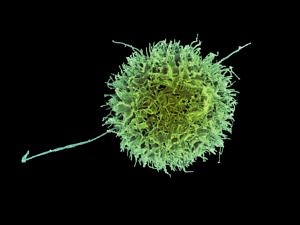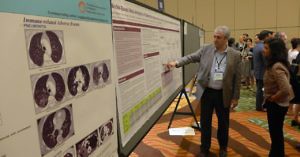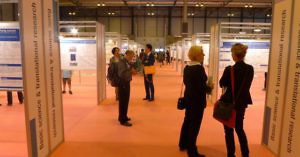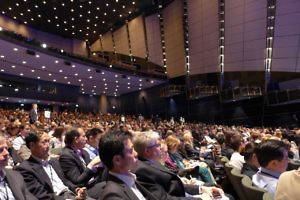 At the 2014 Society for Immunotherapy of Cancer (SITC) annual meeting at National Harbor, MD, one of the presentations that caught my attention was by Marcel van den Brink MD PhD (@DrMvandenBrink), pictured right, from Memorial Sloan-Kettering Cancer Center in New York. (picture courtesy of MSKCC with permission).
At the 2014 Society for Immunotherapy of Cancer (SITC) annual meeting at National Harbor, MD, one of the presentations that caught my attention was by Marcel van den Brink MD PhD (@DrMvandenBrink), pictured right, from Memorial Sloan-Kettering Cancer Center in New York. (picture courtesy of MSKCC with permission).
Dr van den Brink, who is Head of the Division of Hematologic Oncology and Alan.N. Houghton Chair, gave a fascinating talk entitled, “The role of the Intestinal Microbiome on GvHD” (Graft versus Host Disease).
Think of the yogurt pots and probiotic drinks we see in the supermarket with “beneficial” bacteria. We’re familiar with the idea that the make up of the millions of bacteria in our gut can make a difference to our digestion and health.
Well, it turns out it can make a difference to our immune system too. Research presented at the recent SITC meeting by Dr van den Brink showed that manipulating the bacteria in the gut could potentially help the thousands of patients around the world who receive a bone marrow transplant (BMT). BMT is a gruelling procedure that many leukemia, myeloma and lymphoma patients have to face as part of their treatment protocol.
Sadly, about 20%* of people who receive an allogeneic bone marrow transplant from an unmatched donor die from Graft versus host disease (GvHD)
* According to 2010-2011 data from the Center for International Blood and Marrow Transport (CIBMTR), GvHD was the cause of death in 19-23% of people who received an allogeneic hematopoietic stem cell transplant.
After his informative and interesting presentation at SITC, Dr van den Brink spoke with BSB about his findings and what’s on the horizon for the treatment of GvHD.
Over the course of a half hour conversation, he covered some of the new treatment options, one of which may change the standard of care, and the rational some companies are pursuing by targeting the innate immune system.
For those interested in CAR-T cell therapy and the promise of allogeneic CAR-T cells, Dr van den Brink kindly talked about some unpublished data from MSKCC about why we have not seen GvHD in patients who receive allogeneic CAR-T cells.
GvHD is an important topic, and one that deserves more attention. I expect we will here a lot more about it at ASH this year so reading this interview will, hopefully, help you better put that data in context.
Subscribers can login below to read more about what Dr van den Brink had to say at SITC about GvHD.
This content is restricted to subscribers





 Here we take a step back and highlight six key emerging trends and ideas that were either presented in talks and posters, or are sentiments based on conversations with attendees in the poster halls or corridors.
Here we take a step back and highlight six key emerging trends and ideas that were either presented in talks and posters, or are sentiments based on conversations with attendees in the poster halls or corridors. At the 2014 Society for Immunotherapy of Cancer (
At the 2014 Society for Immunotherapy of Cancer (
 So here we are, after nearly two dozen posts, it’s time to close out the
So here we are, after nearly two dozen posts, it’s time to close out the 